So, Bill Clinton is all like, 'Is this swanky public housing or a high-quality prison?' It's a real head-scratcher! Imagine luxury condos with guard towers – a weird blend, right? You've got to wonder if the marble countertops come with ankle monitors. Exploring the fine line between opulence and lockdown, Clinton's comparison has everyone talking. Want to uncover more of this quirky debate?
Bill Clinton's Provocative Statement
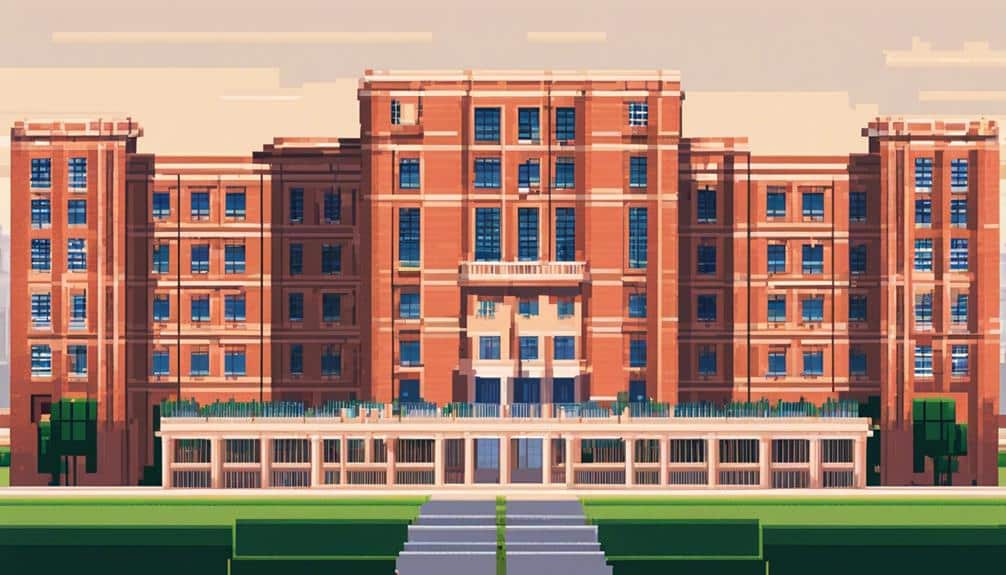
In a recent interview, Bill Clinton stirred controversy by boldly declaring his stance on public housing reforms. The former president, known for his charm and charisma, didn't hold back when he described public housing as a cross between luxury living and a maximum-security prison. It was a statement that raised eyebrows and sparked debates across the nation.
Imagine walking into a public housing unit, expecting opulence, only to find yourself feeling like you've accidentally stumbled into a scene from 'Orange Is the New Black.' That's the kind of reality Clinton painted with his words. The juxtaposition of high-end amenities with strict surveillance and limited freedoms left many scratching their heads.
But hey, maybe Clinton is onto something here. Perhaps public housing could use a touch of glamour mixed with a dash of caution tape to spice things up. Who knew that the key to successful housing reform was the perfect blend of luxury and lockdown?
The State of Public Housing
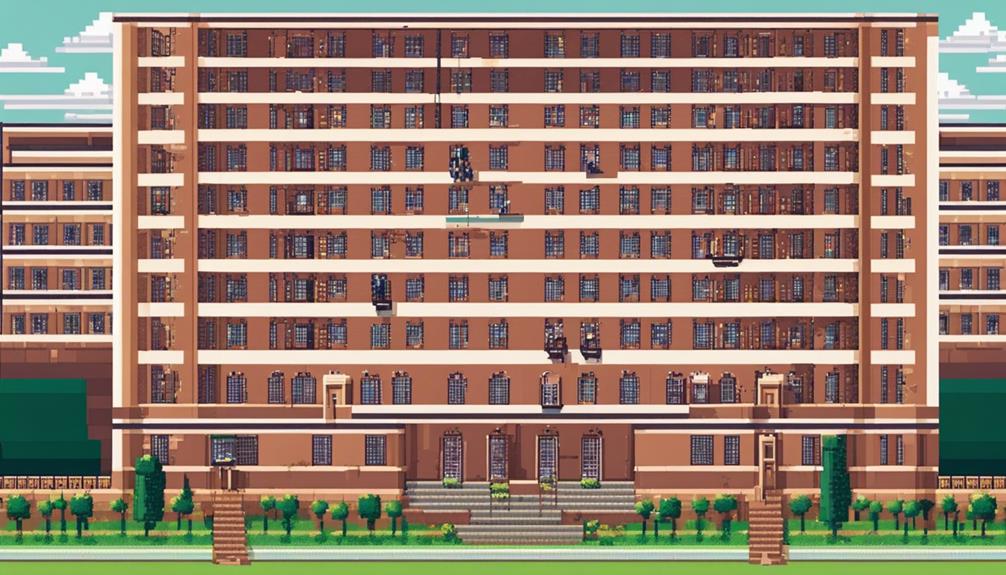
With Bill Clinton's provocative statement on public housing as a backdrop, the current state of public housing reveals a complex terrain of challenges and opportunities.
From the outside, public housing may seem like a vibrant mix of affordable homes and community support, but the reality often paints a different picture. Maintenance issues can turn your dream of a cozy apartment into a nightmare of leaky faucets and flickering lights. The communal spaces intended for social gatherings might resemble scenes from a forgotten horror movie rather than a friendly neighborhood get-together.
Navigating the bureaucracy of public housing applications can feel like attempting to crack the Da Vinci code, with endless forms and waiting lists longer than a CVS receipt.
Yet, within this labyrinth of challenges lies the opportunity for positive change. By investing in better infrastructure and support systems, public housing could truly become the crown jewel it has the potential to be – minus the haunted house vibes and paperwork nightmares.
The American Penal System
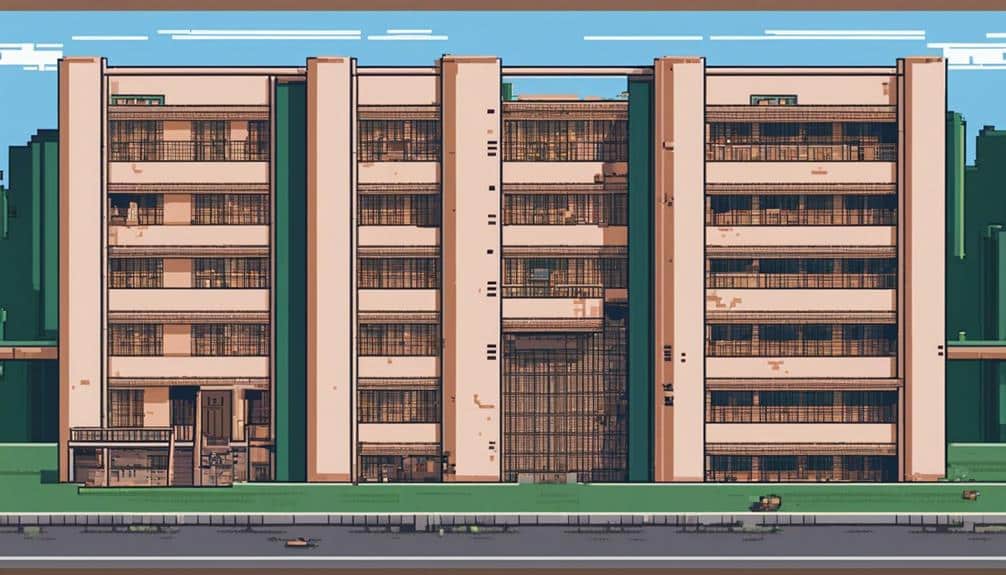
So, you wanna chat about the good ol' American penal system, huh?
Let's talk about the ongoing debate on prison conditions – are they more like luxury resorts or medieval dungeons?
And hey, what about those rehabilitation programs – are they turning inmates into model citizens or just better at playing the system?
Let's peel back the layers of this justice-flavored onion and see what makes it cry, shall we?
Prison Conditions Debate
Poor prison conditions in the American penal system have been a topic of heated debate among policymakers and advocates. Here are some fascinating points to keep you engaged:
- The Mystery of Missing Mattresses:
Ever wondered where all those mattresses in prisons disappear to? It's like a real-life magic trick, but instead of rabbits, it's mattresses!
- The Great Toilet Paper Dilemma:
In prisons, toilet paper seems to be more valuable than gold. Witness the epic battles that unfold over this precious commodity.
- The Curious Case of Contraband:
From cellphones to snacks, prisoners seem to have an endless supply of contraband. It's like a black-market bazaar in there!
- The Intriguing World of Prison Food:
Forget Michelin-starred restaurants; experience the culinary delights of mystery meat Mondays and soggy sandwich Sundays in prison cafeterias.
- The Elusive Search for Privacy:
In prisons, privacy is a rare luxury. Discover the art of finding solitude in a place where every corner seems to have eyes and ears.
Rehabilitation Programs Effectiveness
Rehabilitation programs within the American penal system aim to provide inmates with the tools necessary for successful reintegration into society. But let's be real, expecting a few workshops and group therapy sessions to magically transform someone who's been behind bars into a model citizen is like hoping a broken umbrella will keep you dry in a hurricane.
These programs often feel like trying to teach a fish how to ride a bicycle – ambitious, but ultimately futile. Sure, they offer job training, education, and counseling, but how effective are they really? It's like giving someone a map without marking the X – good luck finding the treasure!
It's no wonder that recidivism rates are as high as the Empire State Building. Maybe instead of teaching inmates how to balance a checkbook, we should focus on teaching them how to balance their lives outside prison walls.
Comparing Public Housing and Prisons
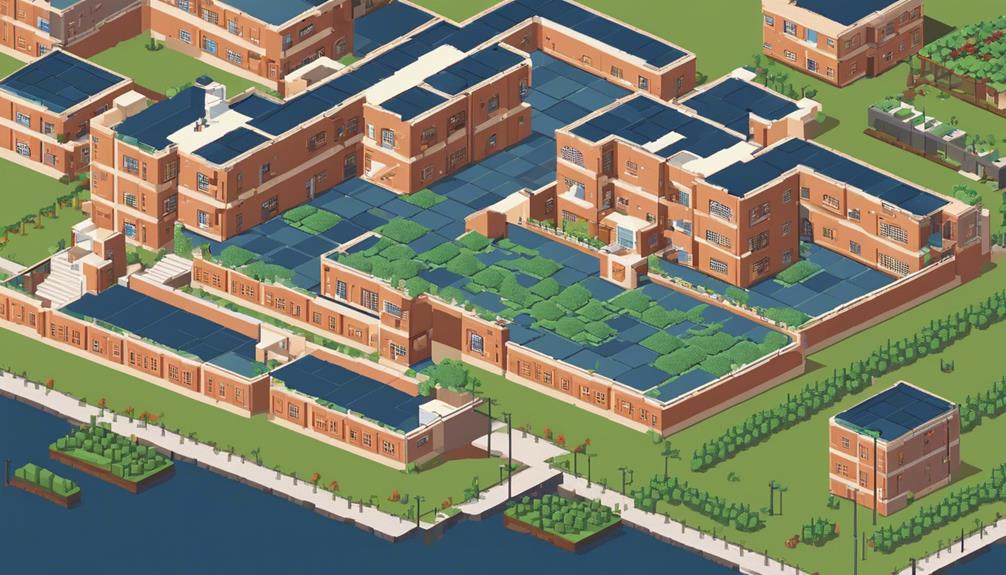
So, you're faced with a decision today: public housing or prisons?
One offers a roof over your head, while the other, well, not so much.
The quality of living might differ just a tad, wouldn't you say?
Housing Vs Incarceration
Comparing public housing to incarceration sheds light on contrasting approaches to addressing societal issues related to housing and crime.
- Public housing: It's like winning the lottery but instead of cash, you get a studio apartment with leaky faucets and noisy neighbors.
- Incarceration: The all-inclusive resort where orange is the new black, and room service means a guard delivering your daily meals.
- Public housing: Your neighbors might borrow a cup of sugar; your biggest worry is the elevator breaking down.
- Incarceration: Your 'neighbors' might be named Big Tony and Tiny Tim, and the only breakdown you'll experience is emotional.
- Public housing: Community events mean awkward potlucks and mandatory meetings about recycling.
Whether you're debating between the quaint charm of public housing or the luxurious amenities of incarceration, one thing's for sure – both options offer a unique perspective on the fine line between freedom and confinement.
Quality of Living
In public housing, the quality of living starkly contrasts with that of prisons. Public housing offers a familiar setting with the freedom to come and go as you please, enjoying the simple pleasures of privacy and independence. You can decorate your space, cook your favorite meals, and host friends for movie nights without bars on the windows or guards watching your every move.
On the flip side, prisons provide a structured environment with limited choices and constant surveillance. Forget about personal touches or spontaneous gatherings; in prison, your schedule, meals, and even bathroom breaks are dictated by strict rules and regulations. The only 'decorations' you'll see are metal bars and dull, uniform walls.
Societal Impact
The societal impact of public housing and prisons is significant, influencing individuals' well-being and communities in distinct ways. When comparing the two, it's like choosing between a rock and a hard place, quite literally.
Here are five eye-opening points worth pondering:
- Community Dynamics: Public housing fosters a sense of togetherness, while prisons breed a different kind of 'community bonding.'
- Economic Effects: Public housing might strain the budget, but prisons drain it faster than a leaky faucet.
- Social Stigma: Living in public housing may come with stereotypes, but being associated with prisons really takes the cake in societal judgment.
- Government Involvement: Public housing receives some support, but prisons? Well, let's just say the government has a more 'hands-on' approach.
- Long-Term Impact: Public housing can uplift generations, whereas prisons can leave a legacy that's more orange jumpsuit than family tree.
In the grand scheme of things, it's like deciding between a cozy studio apartment and a 'free accommodation' at the local correctional facility. Choose wisely!
Societal Implications and Reflections
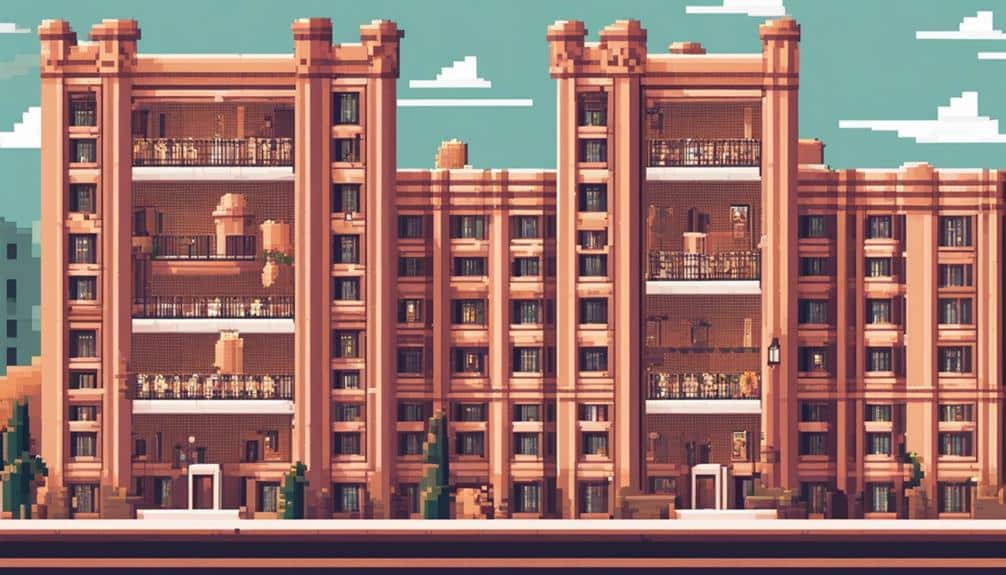
Consider the profound impact that public housing policies have on communities and individuals.
You know, it's like a real-life game of Monopoly, where the properties are rundown and the chances of winning are slim to none. Public housing can shape entire neighborhoods, from the local corner store that never seems to have fresh produce to the perpetually broken streetlights that make nighttime strolls an adventure in itself.
But hey, on the bright side, public housing does offer a sense of community like no other. Where else can you find such a diverse group of characters all living under one roof?
It's like a sitcom waiting to happen, with the nosy neighbor who knows everyone's business and the mysterious recluse who only comes out at odd hours.
Challenges in Housing and Justice
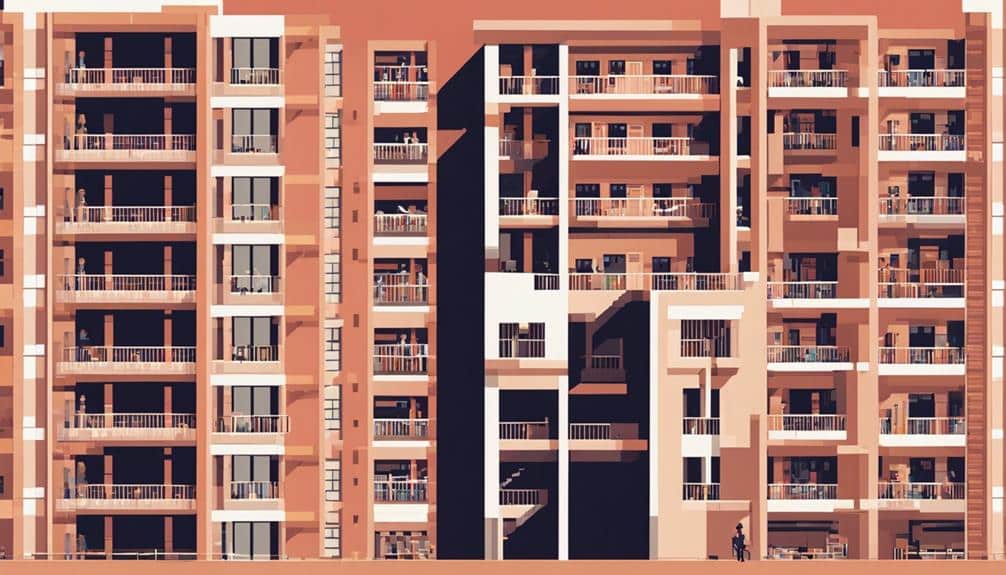
Public housing not only highlights socio-economic disparities but also underscores systemic challenges in ensuring housing justice for all individuals.
So, you thought finding the perfect avocado was tough? Try maneuvering through the labyrinth of housing justice in today's world.
Here are five mind-boggling challenges that make finding a ripe avocado seem like a walk in the park:
- The Waiting Game: Forget waiting in line for your morning coffee; try waiting years for a spot in public housing.
- The Maintenance Mystery: Ever tried fixing a leaky faucet with a spoon? That's the level of mystery maintenance in some public housing units.
- The Budget Conundrum: Juggling bills is one thing, but when your rent eats up 90% of your income, it's a whole new ball game.
- The Neighborly Noise: Remember the noisy neighbor from hell? Imagine living in a building full of them.
- The Legal Labyrinth: Maneuvering housing laws can feel like deciphering ancient hieroglyphics – good luck!
Policy Implications and Considerations
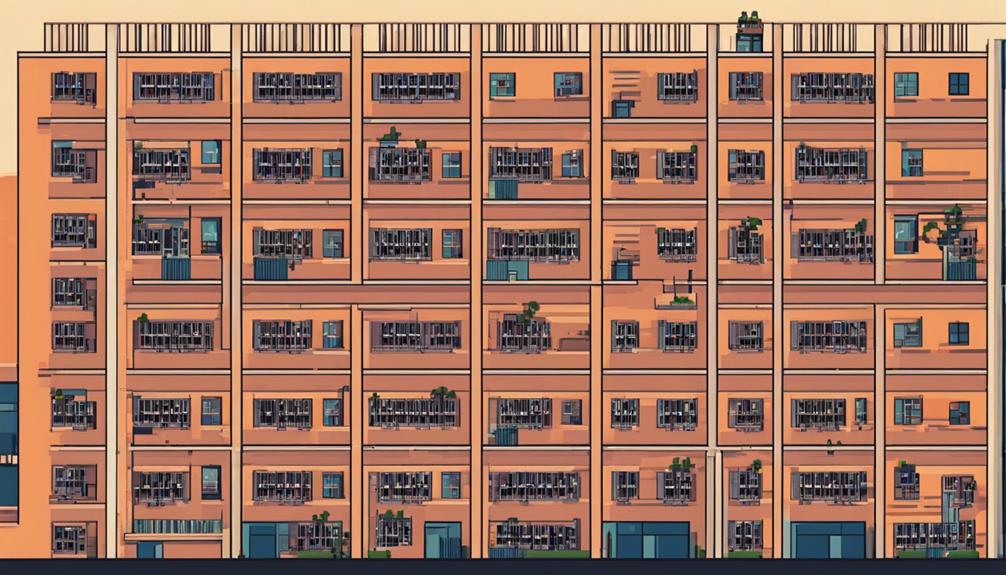
Implementation of effective policies to address housing challenges requires thorough analysis and strategic planning. You might think it's as simple as slapping some paint on the walls and calling it a day, but oh no, my friend.
Housing policies are like a delicate soufflé – one wrong move, and it all comes crashing down. Imagine a world where housing policies are as carefully crafted as a Shakespearean sonnet, each line contributing to the overall beauty and functionality of the piece.
It's not just about putting a roof over people's heads; it's about creating communities where individuals can thrive and flourish like well-watered plants in a carefully tended garden.
Addressing Inequities and Solutions
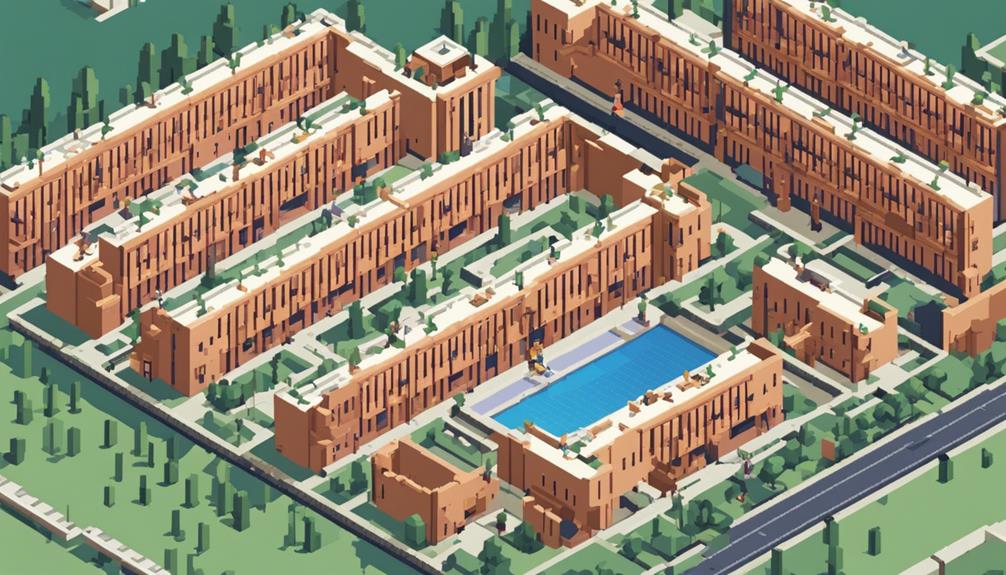
To effectively address inequities in public housing, it's essential to implement targeted solutions that prioritize the needs of marginalized communities. Here are five unconventional yet effective ways to tackle these challenges:
- Host a reality TV show where politicians live in public housing for a month to truly understand the issues.
- Implement a 'Swap Your Mansion for a Week' program to give the wealthy a taste of public housing life.
- Create a public housing makeover competition with celebrity designers to revamp living spaces.
- Organize community potlucks to foster unity and understanding among residents and policymakers.
- Develop a public housing-themed escape room to educate the public about the struggles faced by residents.
Impact on Communities and Individuals
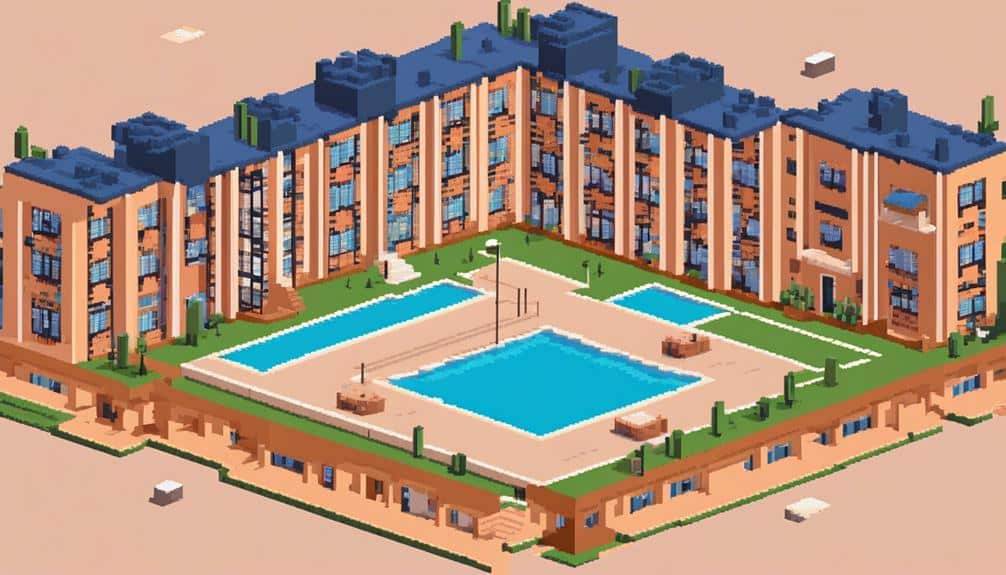
Communities and individuals living in public housing experience significant social and economic impacts that shape their daily lives.
Picture this: you wake up to the harmonious sounds of your neighbor's karaoke at 2 a.m., a gentle reminder that privacy is a luxury here. As you step outside, you're greeted by the charming aroma of mystery meat wafting through the hallways, courtesy of the communal kitchen. Your social calendar? Well, it's booked solid with mandatory meetings and neighborhood watch duties.
But hey, it's not all doom and gloom. You get front-row seats to the latest drama unfolding in the courtyard, making Netflix subscriptions seem obsolete. And let's not forget the perks of free pest control – those roaches are practically family at this point.
In all seriousness, the impact of public housing on communities and individuals is no laughing matter. It's a complex web of challenges and triumphs that shape lives in ways both seen and unseen.
Conclusion
Well, there you have it – according to Bill Clinton, public housing and prisons are like two peas in a pod, just with different amenities.
Who knew that a cozy apartment and a prison cell could be seen in the same light? It's a real estate conundrum, isn't it?
But hey, at least we can all agree that both could use a little sprucing up. Maybe a fresh coat of paint and some throw pillows could really tie the room together.
